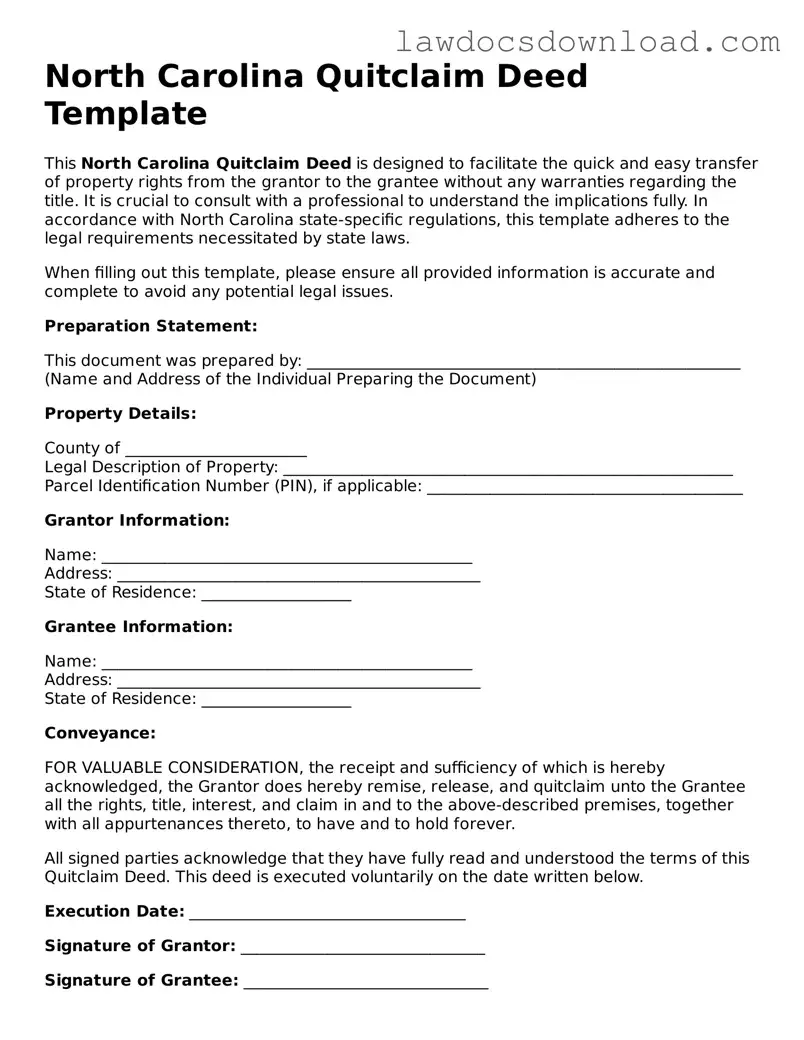North Carolina Quitclaim Deed Template
This North Carolina Quitclaim Deed is designed to facilitate the quick and easy transfer of property rights from the grantor to the grantee without any warranties regarding the title. It is crucial to consult with a professional to understand the implications fully. In accordance with North Carolina state-specific regulations, this template adheres to the legal requirements necessitated by state laws.
When filling out this template, please ensure all provided information is accurate and complete to avoid any potential legal issues.
Preparation Statement:
This document was prepared by: _______________________________________________________
(Name and Address of the Individual Preparing the Document)
Property Details:
County of _______________________
Legal Description of Property: _________________________________________________________
Parcel Identification Number (PIN), if applicable: ________________________________________
Grantor Information:
Name: _______________________________________________
Address: ______________________________________________
State of Residence: ___________________
Grantee Information:
Name: _______________________________________________
Address: ______________________________________________
State of Residence: ___________________
Conveyance:
FOR VALUABLE CONSIDERATION, the receipt and sufficiency of which is hereby acknowledged, the Grantor does hereby remise, release, and quitclaim unto the Grantee all the rights, title, interest, and claim in and to the above-described premises, together with all appurtenances thereto, to have and to hold forever.
All signed parties acknowledge that they have fully read and understood the terms of this Quitclaim Deed. This deed is executed voluntarily on the date written below.
Execution Date: ___________________________________
Signature of Grantor: _______________________________
Signature of Grantee: _______________________________
Witness Signature (if required): _________________________
Notary Public Acknowledgment:
State of North Carolina
County of _______________________
On this, the ________ day of ____________, 20__, before me, a Notary Public, personally appeared ________________________, known or identified to me to be the Grantor in this Quitclaim Deed, and acknowledged that they executed the same as their voluntary act and deed.
Notary Public: _______________________________________
My commission expires: ________________________________
